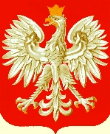Explanation of Language Usage On This SiteI will use both Ukrainian and Polish to refer to place names located within Halychyna / Galicia. In most cases, I'll use Ukrainian first, then followed by Polish. The Ukrainian will be in transliterated form and/or original Cyrillic form. I will do this for several reasons. First, it allows me to address both the Polish and Ukrainian genealogist. Often, resources are geared only to one of these groups at a time. If one is fortunate enough to understand the correlation between the two languages, this does not pose a problem. However, for the beginner genealogist, his/her familiarity may be with only one of these languages’ terms. He/she may not know that his/her own ancestors who came from Lwów also came from Lviv!! I will use my site to educate the genealogist who is new to researching Galicia. Second, I will include both language’s terms in order to provide an unbiased feeling to the site. I want my site to help all genealogists interested in the region. It’s hard enough to find information on Galicia...the last thing you want to do is scare someone away! I’ve considered a system of using Ukrainian for places currently in Ukraine and Polish for places currently in Poland. But this would not help the new beginner who is familiar with only one of the languages. Also, since so many of the available resources use only one language, someone could become confused, or worse yet, misinformed entirely. Let’s face it, most of the place names from resources before World War II will use the Polish, which puts the Ukrainian genealogist familiar only with today’s proper Ukrainian terms at a severe loss. Likewise, someone only familiar with the Polish spellings from these outdated sources does not know how to proceed in post-WWII research. I believe that my dual language system eliminates these problems. When writing Ukrainian I’ll use the Library of Congress system of transliteration from the Cyrillic alphabet into the English. I personally find the Library of Congress system irregular and insufficient. However, it is currently the most popular system in North America. Visit the European Reading Room website for the table of the Library of Congress' Cyrillic Transliterations. For reading proper Polish and Ukrainian in the Cyrillic alphabet, please set your web browsers to read the following encoding: Polish: Central European (also known as CP-1250) Ukrainian Cyrillic: Cyrillic Windows (also known as CP-1251) Both Polish and Cyrillic: Unicode (UTF-8) On pages where Polish predominates I've used the CP-1250 encoding, on pages where Ukrainian predominates I've used CP-1251. On some pages where I had to use both Polish and Ukrainian for examples, I used Unicode. This encoding allows both Cyrillic and Central European (as well as most languages in the world) be readable. If you still have difficulty reading Polish and Ukrainian characters, visit Paul Gorodyansky's webpage on the subject. http://ourworld.compuserve.com/homepages/PaulGor/.
Instructions on changing the encoding Microsoft Internet Explorer: For Polish characters, Click on View, then Encoding. Choose Central European. |
|
www.halgal.com
Questions and Comments to Matthew
Bielawa |

